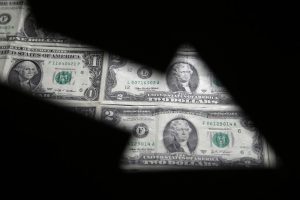By Ritu,
The dollar was marginally down on Friday and risk appetite boosted by statements from China on the need to find a solution to the tit-for-tat tariff war with the United States, raising hopes that a “phase one” deal could be reached.
Chinese President Xi Jinping said Beijing wants to work out a deal with Washington and has been trying to avoid a trade war – but is not afraid to retaliate when necessary.
A senior Chinese diplomat urged the United States to compromise in order to develop stable relations between the countries.
But after a week of mixed signals over the likelihood of a preliminary trade deal, the developments did little to move markets. Currencies continued to trade in tight ranges.
“At the end of the day, there is little progress on trade talks, and it looks like both sides are fine with another delay of the phase 1 deal,” he wrote.
Against a basket of currencies, (DXY), the dollar was down less than 0.1%, breaking its three-day streak of gains and heading for its smallest weekly change since the start of August this year.
The Swiss franc was down 0.2% against both the dollar <chf=ebs>and the euro (EURCHF=EBS), suggesting market optimism as the Swiss franc is perceived as a safe-haven currency.</chf=ebs>
But the Japanese yen – also seen as a safe haven – was flat against the dollar <jpy=ebs>.</jpy=ebs>
The trade-exposed New Zealand dollar and Swedish crown were both up 0.2% against the U.S. dollar <nzd=d3>.</nzd=d3>
MUFG currency analyst Lee Hardman wrote in a note that low volatility and tight trading ranges are currently the key characteristics of the FX market.
German third quarter GDP data released earlier this morning held no surprises, showing that exports, state spending and consumers helped the German economy avoid a recession.
“Up to now, the slowdown in Germany has been concentrated in the manufacturing sector,” Daria Parkhomenko, forex strategy associate at RBC Capital Markets, wrote in a note to clients.
“Unless global uncertainties are lifted, which are weighing down on the manufacturing sector, it is only a question of when, not if, the weakness in manufacturing spreads to the rest of the economy,” she wrote.
The euro was slightly up against the weaker dollar (EUR=EBS).
Flash Eurozone PMI data were due at 0900 GMT.





